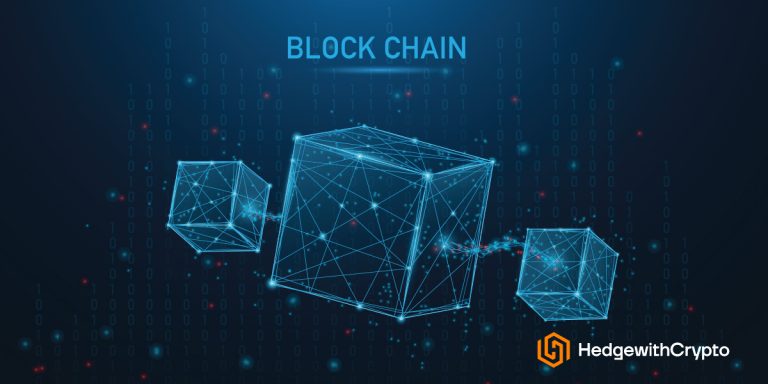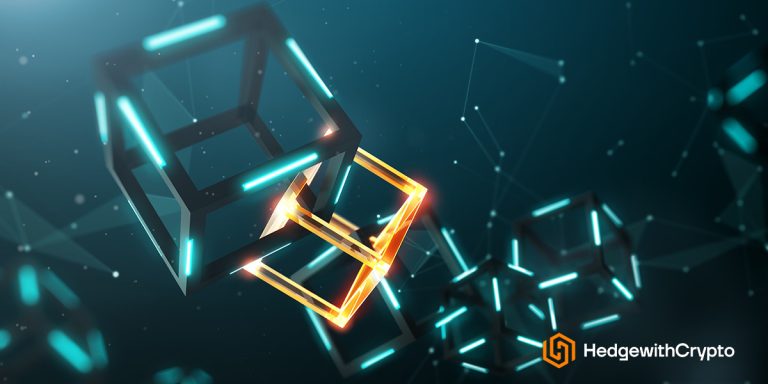How To Use Arbitrum Bridge
Key takeaways:
- Arbitrum Bridge is a blockchain protocol that facilitates communication between the Ethereum main net (Layer 1) and the Arbitrum sidechain (Layer 2) where users can transfer assets and data between them.
- The Arbitrum Bridge solves compatibility issues between the two layers for Ether, ERC-20 tokens, and NFT (ERC-721) tokens.
- A key benefit is that the Arbitrum Bridge enables quicker and cheaper transactions on the Arbitrum sidechain while still maintaining the security and decentralization of Ethereum's main net.
TABLE OF CONTENTS
Arbitrum bridges improve cross-chain interoperability and allow users to fully leverage the DeFi universe. However, learning to use the technology can be difficult for novices.
To bridge your ETH tokens using the Arbitrum bridge, follow these steps:
- Set up a non-custodial wallet
- Add the Arbitrum network to the crypto wallet
- Bridge ETH tokens via the Arbitrum Bridge
- Navigate the Arbitrum ecosystem’s dApps
- Withdraw tokens using the Arbtrium Bridge
How To Use Arbitrum Bridge – Complete Guide
Using a blockchain bridge can be an intimidating process for a first-timer. However, taking advantage of the Arbitrum Bridge is actually straightforward once investors know what they are doing.
1. Set up a non-custodial wallet
To get started, you will need a crypto wallet that supports the Ethereum and Arbitrum networks. One of the most popular options is MetaMask, a Google Chrome browser extension that’s compatible with several prominent blockchains. Visit the MetaMask website, install the wallet, and create an account (making sure to note the seed phrase somewhere safe). Also, read our Metamask review for more details.
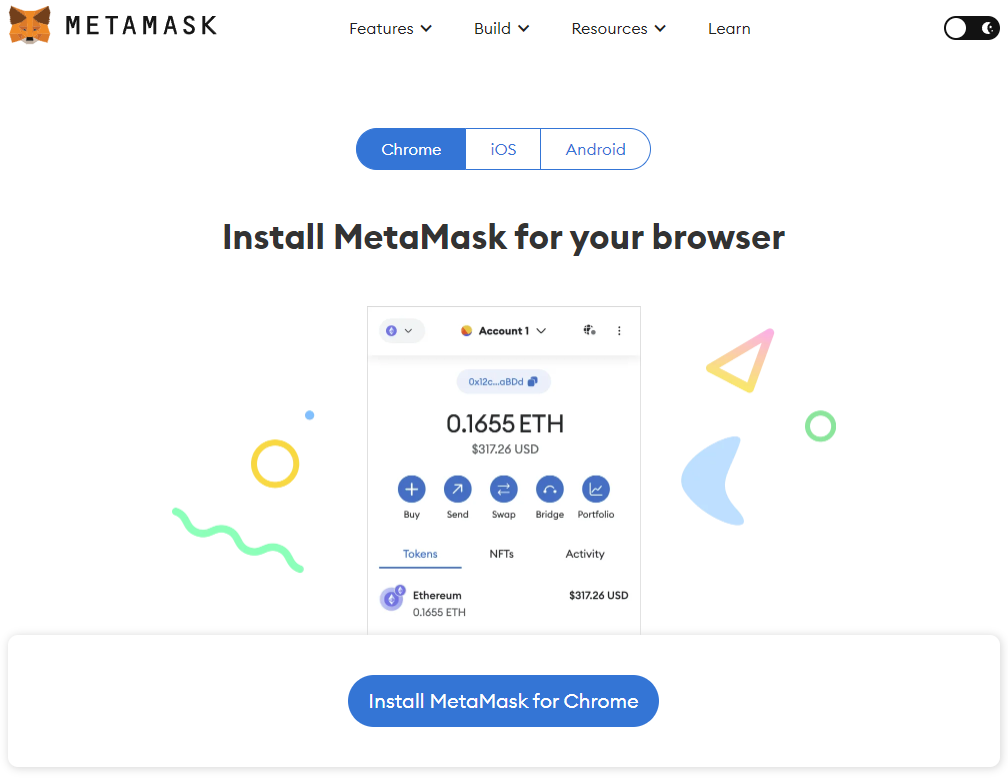
Arbitrum Bridge also works with Coinbase Wallet and WalletConnect, and the process for using the bridge is similar no matter which wallet is being used. Load up the wallet with the Ethereum-based assets set to be transferred across chains.
Arbitrum Bridge also works with Coinbase Wallet and WalletConnect, and the process for using the bridge is similar no matter which wallet is being used. Load up the wallet with the Ethereum-based assets set to be transferred across chains.
2. Add the Arbitrum network to the crypto wallet
Next, ensure that the Arbitrum network is added to the crypto wallet (in this instance, MetaMask). This step is very important – if done incorrectly, the bridge will not work and the investor may lose their tokens permanently.
For Arbitrum One
This is quite simple on MetaMask. Open the browser extension and click on the dropdown menu on the top-left of the wallet (by default this will appear as an Ethereum symbol). Doing so will bring up a list of supported networks. Select “Add network” to bring up the next page on a new tab. From here, just click “Add” next to Arbitrum One.
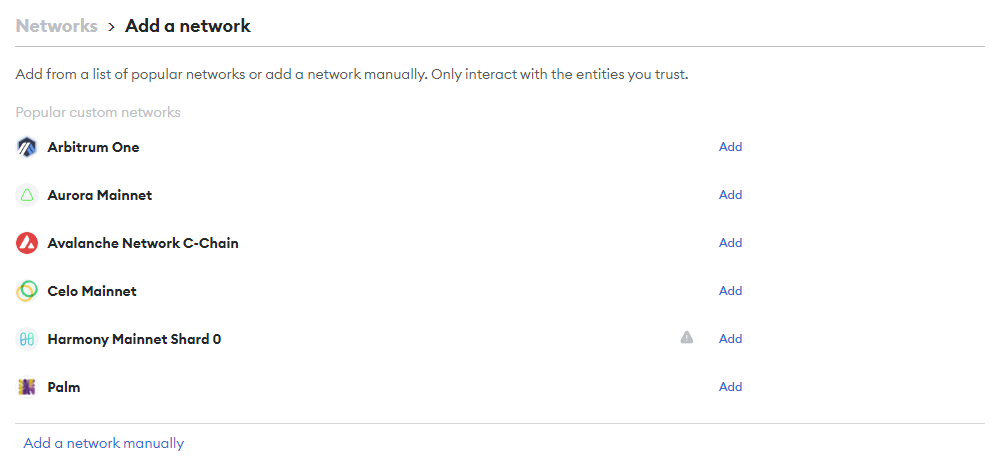
Select “Approve” from the pop-up notification to complete the process. Users can now seamlessly swap between Ethereum and Arbitrum networks by selecting the desired blockchain via the same drop-down menu we used earlier.
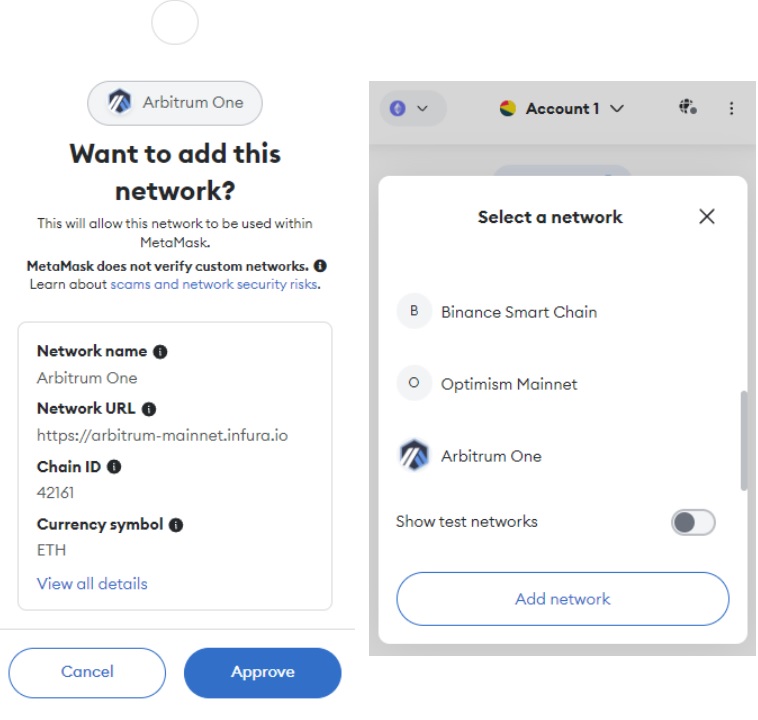
For Arbitrum Nova
Setting up Arbitrum Nova on MetaMask takes a little more effort but has been streamlined to be a relatively stress-free task. Originally, users would have to manually add Nova’s network details, however, now the process is automated.
Ensuring that MetaMask has been installed and the account is logged in, Nova users should head over to ChainList. This platform lists Ethereum Virtual Machine (EVM) networks that are compatible with MetaMask, adding them to the wallet with just a click.

From ChainList’s main page, select “Connect Wallet” from just under the search box. Confirm the process to ensure the MetaMask wallet account is linked to Chainlist. Then, simply scroll down (or search for) the Arbitrum Nova network.
Now, just click “Add to Metamask” and approve the transaction via the pop-up notification from MetaMask. And that’s it. Users can now switch between the Ethereum and Arbitrum Nova networks.
3. Bridge ETH tokens via the Arbitrum Bridge
Now that the networks are set up on MetaMask (or the wallet of choice) it’s time to head to Arbitrum Bridge. The protocol can be accessed on the Arbitrum platform and by selecting “Bridge Into Arbitrum”. Or by visiting the Bridge’s website directly.
Users will then be prompted to connect a wallet to the Arbitrum Bridge via a pop-up menu. In this example, we are using MetaMask, but the protocol also supports Rainbow, Coinbase Wallet, WalletConnect, and Ledger Live.
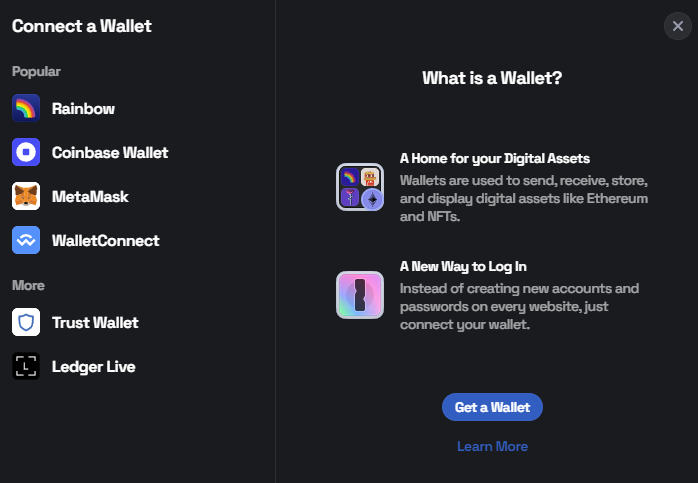
Confirm the connection via the wallet’s notification box and eventually the bridge will unlock. We can now see the various networks and token options to bridge between – the Ethereum Mainnet, and Arbitrum One or Nova. To bridge ETH tokens from Ether to Arbitrum One, we must select “From: Mainnet” in the top box and “To: Arbitrum One” in the lower box.
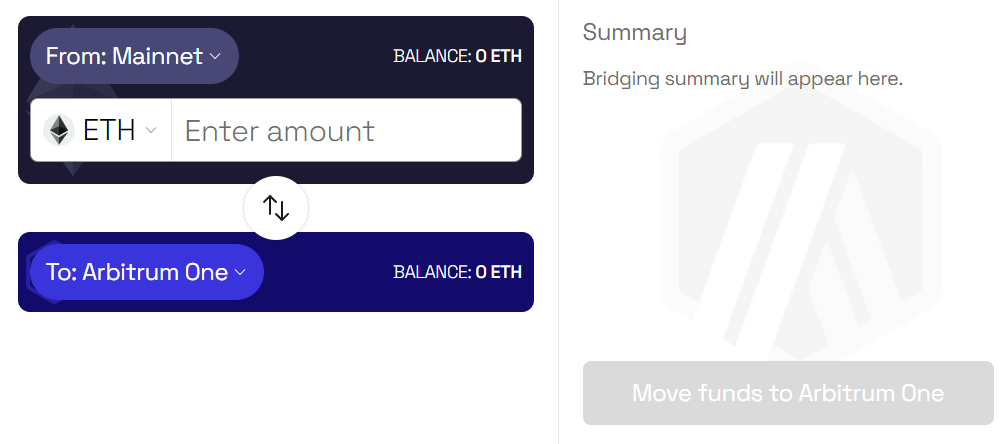
The Arbitrum Bridge will automatically switch MetaMask’s networks depending on the assets being received. For example, users that wish to bridge to Arbitrum One from Ethereum will receive a pop-up notification in MetaMask confirming the change.
Next, simply input the amount of ETH to be transacted across chains and click “Move funds to Arbitrum One”. Confirm the transaction, and that’s it – the Ether should be accessible via MetaMask and can be used on Arbitrum One’s variety of dApps. If the bridged ETH isn’t visible, it’s possible MetaMask (or the wallet being used) isn’t set to the correct network. Ensure the wallet is set to Arbitrum One (or Nova) in the top-left dropdown menu.
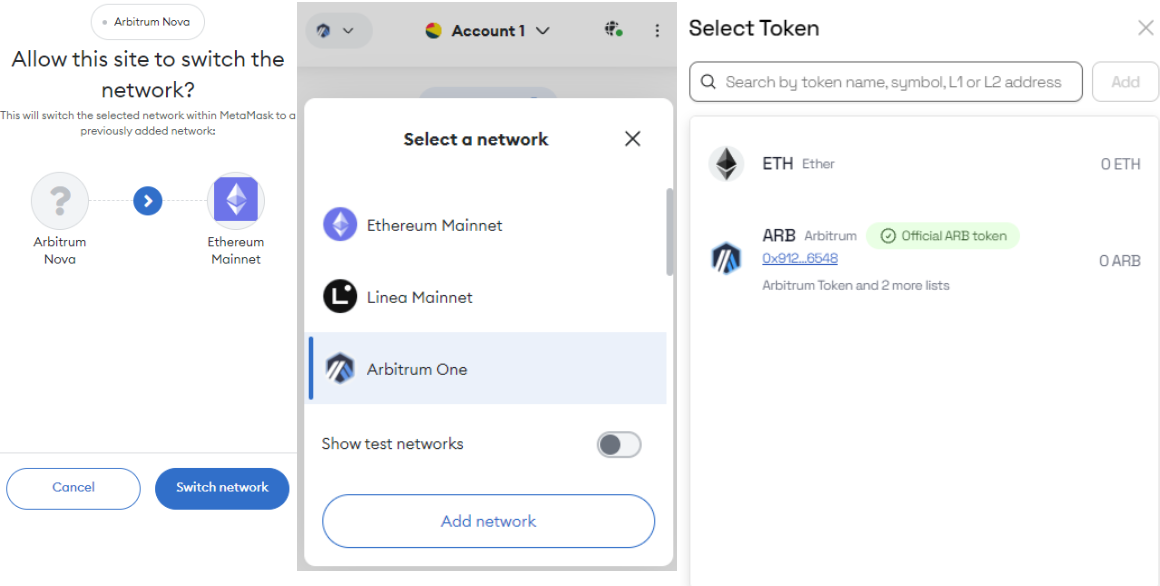
To bridge a token other than ETH onto the Arbitrum Layer 2 chains, we must manually add them. Click on the button that says “ETH” to bring up a token search menu. Simply search for the relevant token (rather than the project name). For example, type in “SOL” instead of Solana to bridge SOL tokens cross-chain. To be even more precise, investors can head to CoinMarketCap – or another alternative to CoinMarketCap – and copy-paste the token address into the search box.
4. Navigate the Arbitrum ecosystem’s dApps
An easy way to quickly browse the Arbitrum One ecosystem is by visiting its portal. Arbitrum Nova also has its portal, although lacks the same breadth of functionality. Investors can now simply click on the application that they wish to use and will be redirected to the project’s page. From there, they can follow the on-screen instructions, connect their Arbitrum-compatible wallet and the process is complete!
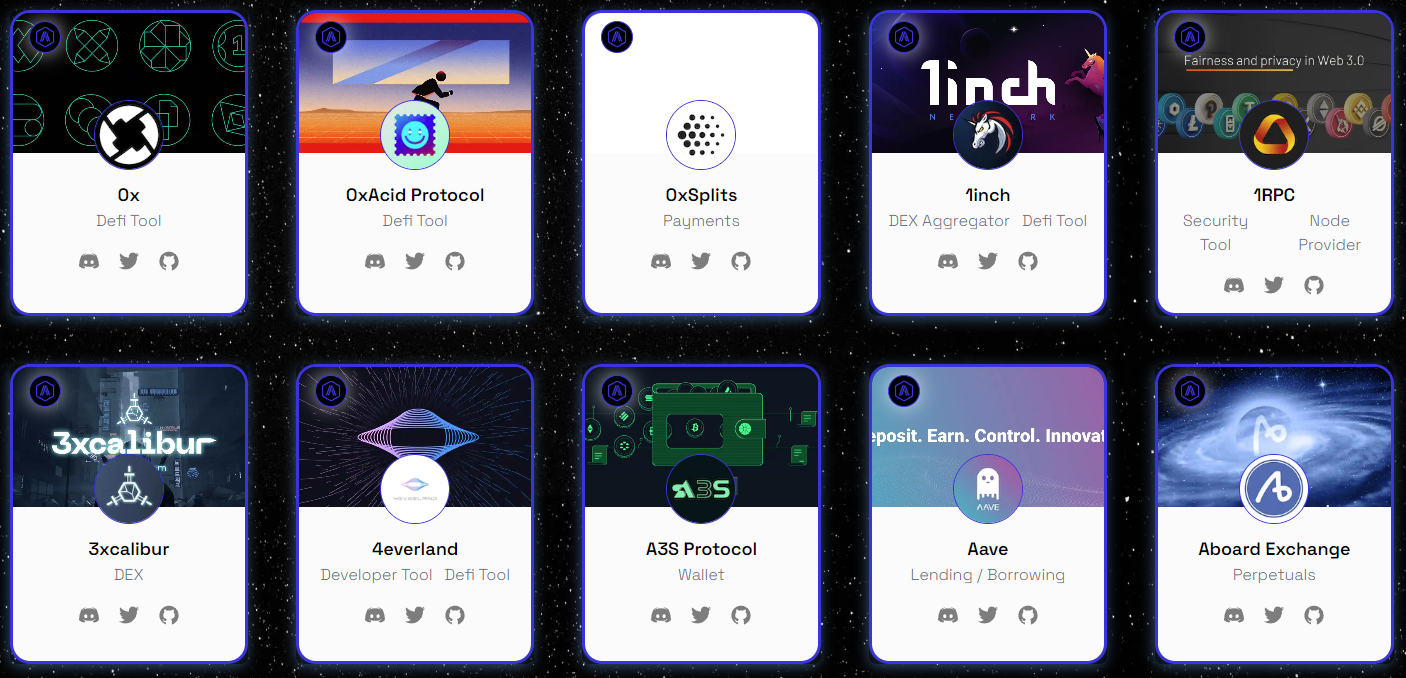
5. Withdraw tokens using the Arbitrum Bridge
When investors are done using the Arbitrum ecosystem and wish to use their assets on the Ethereum protocol, they can simply revisit the bridge to withdraw them. The process is very similar, but there are a couple of things worth considering before launching into this step:
- At the time of writing, there is a seven-day withdrawal period for withdrawing assets via the Arbitrum Bridge. This means if an investor needs to sell their crypto in the next week, they should consider using a different bridge.
- Ensure that the wallet being used has a little bit of ETH to cover bridging gas fees.
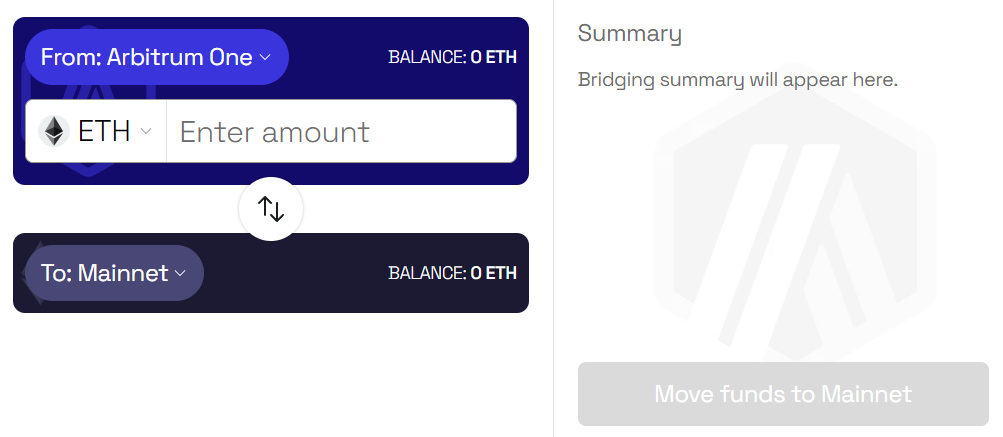
If the above is okay, head back to the Arbitrum Bridge and set up the desired parameters (remembering to first connect a wallet and set it to the correct blockchain network). For withdrawing ETH back from Arbitrum One to Ethereum Mainnet, it will look like this:
To finalize the process, select “Move funds to Mainnet” and confirm the transaction on MetaMask (or the wallet used). And voila – in seven days, the funds will be withdrawn and can be accessed via the wallet.
The Fees For Using Arbitrum Bridge
Arbitrum is a Layer 2 solution for the Ethereum Mainnet’s congestion issues. The exact fee users will incur using the Arbitrum Bridge will vary substantially based on several factors, including:
- Network activity at the time of bridging
- Amount of ETH/other assets being bridged
- The specific token being bridged
In general, however, Arbitrum and its related protocols are designed to be much cheaper than its Layer 1 counterparts. Sending ETH via the Arbitrum Bridge typically costs around $0.05-0.20 per transaction, which is quite cost-effective given the large number of dApps available on Arbitrum One. Performing the same transaction on Ethereum’s Mainnet may incur a gas fee of between $0.75-6. Sending large amounts of Ether via Ethereum has been known to rack up transaction costs of $50+. To find out how much it costs to send ETH, read this article.
How Long Does Using Arbitrum Bridge Take?
The entire process of bridging ETH from Ethereum to Arbitrum can take a couple of hours, depending on a couple of factors:
- The user’s level of expertise using DeFi tools like bridges and non-custodial wallets
- Network congestion
Experienced users might only need to spend a couple of minutes setting up their wallets for bridging, while total novices may take over an hour to make the required accounts and transfer ETH (or another token) around. Arbitrum Bridge is one of the slower Layer 2 bridges in the DeFi landscape. Depending on network activity, transferring Ether from the Mainnet to Arbitrum One/Nova can take anywhere from less than 1 minute to over an hour.
In addition, withdrawing Ether – or another asset – from Arbitrum One/Nova to the Ethereum Mainnet via the Arbitrum Bridge takes at least 7 days.
Arbitrum Bridge Supported Tokens
Arbitrum Bridge is one of the more widely used DeFi bridges and thus supports a huge variety of cryptocurrencies. Arbitrum supports ERC-20 and ERC-721 token standards which encompass a massive number of assets and projects. More obscure coins can be manually added to the Arbitrum Bridge via their token address.
Some of the well-known examples that Arbitrum Bridge supports include:
Arbitrum Bridge & How It Works
Arbitrum Bridge is a blockchain bridge protocol that allows users to transfer their Ethereum Virtual Machine assets such as Ether, ERC-20 tokens, and NFT (ERC-721) tokens between compatible with Arbitrum’s Layer 2 networks.
The bridge lets users navigate Arbitrum One and Nova’s wide range of decentralized apps and use them at a lower cost than similar platforms on the Ethereum network. The bridge also works in reverse, allowing users to convert their Arbitrum-capable assets back to their original token standard.
In simple terms, Arbitrum Bridge locks up tokens in a Layer 1 smart contract and deploys an equivalent number of tokens on the Layer 2 protocol. The converted tokens, available via a supported crypto wallet, can then connect to and be used on Arbitrum’s broad range of dApps – helping blockchain users to substantially save on gas fees.
Once the user has finished using Arbitrum-based dApps, they can withdraw the tokens from the initial smart contract (depending on how much they’ve spent or received) back into their Ethereum-compatible wallet. Because the Arbitrum bridge uses smart contracts rather than a third party to transfer tokens, it can be considered a trustless or decentralized bridge.
This Is What You Can Use Arbitrum Bridge For
The Arbitrum Bridge’s primary purpose is to transfer supported assets from Ethereum’s main blockchain to one of Arbitrum’s Layer 2 Chains – One or Nova. This lets you navigate the world of decentralized finance and the applications and services available within Arbitrum’s ecosystem and take advantage of the network’s lower costs. There are many important dApps that can be accessed via Arbitrum One, including:
- Aave (lending protocol)
- Uniswap (decentralized exchange)
- 1inch Network (decentralized exchange)
- SushiSwap (decentralized exchange)
- 0x (decentralized exchange)
- Alchemy (web3 development infrastructure)
- Stargate (bridge)
- ThorWallet (wallet)
Arbitrum Nova has a smaller selection of dApps to browse, but still provides plenty of utility, including:
- Coinbase Wallet (wallet)
- Celer Network (bridge)
- Gate.io (centralized exchange)
- Reddit (social media application)
- Starfall (web3 game)
Is Abritrum One Different?
Arbitrum One is the Mainnet of Arbitrum’s entire ecosystem. It uses tech called the Arbitrum Virtual Machine (AVM), which sits adjacent to and is interoperable with the widely-used Ethereum Virtual Machine (EVM). This protocol is designed to handle general decentralized finance operations, such as staking and automated market maker (AMM) platforms.
Is Arbitrum Nova Cheaper To Bridge ETH Tokens?
Arbitrum Nova is a specialized version of the Arbitrum ecosystem that sacrifices decentralization for optimization. Nova is designed to facilitate low-cost and fast dApp transactions for projects that require lots of throughput.
Web3 games, Reddit, and Google Cloud might be examples of such applications. To support its streamlined transaction processing, Nova verifies data via a data availability committee (DAC) headed by a select few members.
Because transaction confirmation is performed by a handful of individuals rather than a decentralized web of validators, Nova is a little more centralized than the Arbitrum Mainnet and cheaper.
The Risks Of Using Arbitrum Bridge
Bridging technology is an important step toward improving blockchain interoperability and achieving mainstream adoption. However, bridges are still being perfected, and using them may come with certain risks and vulnerabilities that can be exploited. As Arbitrum Bridge is trustless, this means it uses smart contracts to store and release coins across different chains. If the smart contract coding is bugged or doesn’t work as intended, it may result in the loss of user funds.
However, Arbitrum Bridge is generally considered to have sturdy infrastructure that should help users feel relatively safe when using the protocol.
Frequently Asked Questions
What is bridging in Arbitrum?
Bridging in Arbitrum involves transferring tokens from the Ethereum Mainnet (Layer 1) so they are compatible with Layer 2 processing. This allows DeFi users to navigate Arbitrum and enjoy lower gas fees when using decentralized applications. Without bridging, ETH tokens cannot be sent across the Arbitrum network.
How do I bridge Arbitrum to MetaMask?
MetaMask can easily connect to the Arbitrum Network by selecting “Arbitrum One” from the wallet’s dropdown list of supported networks. Arbitrum Nova users can manually add the Layer 2 chain to MetaMask via a platform like Chainlist.
Is Arbitrum Bridge safe?
While no bridge can be considered fully safe, Arbitrum Bridge has so far encountered very few issues with security. The biggest potential risk comes through a smart contract bug, which is an issue in the bridge’s coding. However, Arbitrum Bridge is considered quite safe among the crypto community.

